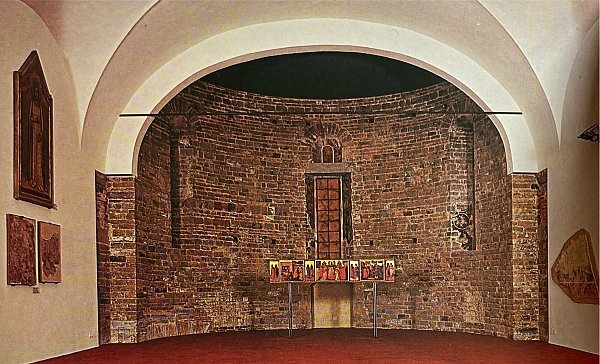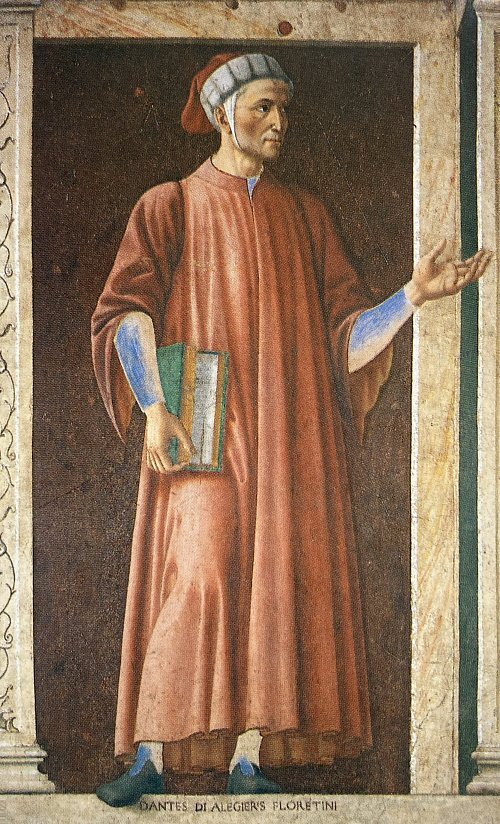San Piero Scheraggio
The vestibule of the ticket office gives access to two recently restored rooms that were formerly part of the very old Romanesque church of San Piero Scheraggio.
The church was built in the 11th century to replace an even older one dating back to the 9th century and was consecrated in 1068.
In 1292, when the church was the seat of the Councils of the Comune, Giano della Bella promulgated there his Ordinamenti di Giustizia, relating to the government of the city.
Dante and Boccaccio also held public orations there.
In 1560 the church was incorporated into the Uffizi factory and underwent a drastic reduction in size; nevertheless it remained open for worship until the mid-1800s. The first room is traversed in the center by an elevated walkway; the remains of the original flooring and some medieval burials are still visible.

 Dante Alighieri
Dante Alighieri
Temporarily arranged in this room are Andrea del Castagno's frescoes depicting Illustrious Men: The Cumaean Sibyl, Giovanni Boccaccio, Francesco Petrarch, Dante Alighieri, Farinata degli Uberti, Pippo Spano, Niccolò Acciaioli, Esther and Queen Tomiri.
These figures, with their solid and energetic statues, are highly representative of the artist's own heroic conception of the human figure, a conception that would become even more concrete a few years later in the Monument to Niccolò da Tolentino, painted in Santa Maria del Fiore.
On the right side is the large panel painting depicting the Battle of San Martino, by Corrado Cagli, donated to the Uffizi by Franco Muzzi. The second room corresponds to the apse area of the ancient church and preserves some fragments of the frescoes that covered it, as well as the Madonna della Ninna, by the Master of San Martino alla Palma (14th century). In the elevator vestibule, two columns from the right aisle of San Piero Scheraggio are visible with traces of the frescoes that covered them: one of them has an image of St. Francis.
On the left wall, a portrait commemorates Anna Maria de' Medici, electrice palatina, who, by will, left the Uffizi to the Tuscan state, while a modern work by Giorgio De Chirico hangs on the opposite wall. In the background is Alessandro Botticelli's Annunciation, a detached fresco from the convent of San Martino alla Scala considered one of the master's masterpieces.
